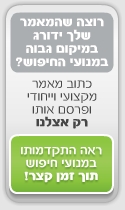Welcome to New York City!
Click Here for the Best New York Hotel Deals! 
New York City is also known to many as “The Big Apple”,שמג has five “boroughs”; Manhattan, Brooklyn, Queens, The Bronx and Staten Island all connected by a series of bridges, subways, trains and ferry systems. “The City That Never Sleeps” according to Frank Sinatra 1979 hit “New York, New York”.
Since late 90' NYC is among the safest cities in the world welcoming over 40 million tourists every year. It's climate includes blustery winters, a beautiful spring, warm summers and colorful autumns with plenty to do indoors and outside (Central Park).
The City was settled in 1625, sits on the southern most part of the great state of New York and is the most populous and densely populated city in the United States. NYC ids the home to the United Nations, and the city boasts over 8.2 culturally diverse residents within an area of 322 sq. miles and is an economic, financial, commerce, cultural, sporting, tourism and media hub. The New York Metropolitan area is considered New York City – Northern New Jersey – Long Island and has a population in excess of 18 million people.
Without a doubt, the best way to explore New York is on foot. It does not matter the neighborhood you're exploring, you'll get a better sense of it by wandering around. You can see the architecture, taste the local food in the deli's and cafés, and just wonder around with the locals. New York grid system makes it hard to get lost for more than a few blocks and you might find that the New Yorker (in case he or she knows english) can be helpful with directions.
The days when New York's subways were dangerous are long gone. Now, the city's network of underground trains is the most efficient and safevway to get around. (City buses are equally cheap, but can take forever to navigate through traffic, especially crosstown.) The subway is over 100 years old. Still, $2 gets you to almost any neighborhood in Manhattan or the outer boroughs, and lines that service the most popular destinations are generally clean, with maps and signs that clearly state where you're going. Thw subway gets crowdy during rush hours and the rush and the push is all around you. Still, it is worth it
( Ten New York Tips (From Liz Humphreys the author of USATODAY.com's New York City Guide
Don't be afraid to wander.. Most of Manhattan, with the exception of a few downtown neighborhoods like the West Village, the Lower East Side and Battery Park, is laid out on a grid system with very few hills, making it easy to find your way around. In fact, a highlight of your trip will likely be strolling the streets gazing at the fascinating people, buildings and sights that pop up on every corner.
Take the 'A' train. Though the New York subway system is ancient the trains are well-marked and surprisingly fast, often a better bet than cabs if you're trying to cross the city from east to west or vice versa, or traveling during the morning or evening rush hours. The subways do run 24 hours a day, but if you're alone, you may feel more comfortable taking a taxi after midnight, though you'll find many people still riding the rails. Tip: The 7-day unlimited ride MetroCard is usually a good deal so you don't spend $2 on MetroCards each time you hop on the train.
Eat dinner early – or late. When New Yorkers eat out, they like to take their dinner between 8 and 10 p.m. If you want to eat at the same places they do, it's best to make a reservation in advance – at least a week ahead of time for most places and a full month ahead for perpetually booked favorites and to go for an evening between Sunday and Wednesday rather than the always-crowded Thursday through Saturday. But if you've left things till the last minute, try calling a day or two ahead and reserving a table either for before 7 p.m. or after 10:30 p.m., which exponentially increases your chances of getting seated, even at the hottest spots in town..
The world on a menu. New York City houses so much diversity of cuisines that it's a shame to stick to tourist neighborhoods or chain restaurants you probably have at home. Travel to some of the city's ethnic enclaves to sample delicious, cheap and authentic fare. In Queens, an easy subway or cab ride from Manhattan, there's renowned Indian food in Jackson Heights and hard-to-find Egyptian cuisine in the "Little Cairo" neighborhood of Astoria. Astoria is also home to many old-time Greek restaurants, primarily situated on Broadway or Ditmars Blvd. More authentic Italian meal can be foud on Arthur Ave. in the Bronx than in the tourist-clogged streets of Manhattan's Little Italy, and it's hard to beat the soul food found in Harlem, including the famed, family-run Sylvia's. Consider expanding your boundaries with a guided neighborhood food tour.
Scout out the smaller shops. It's nearly impossible to visit one of the fashion capitals of the world and not drop some dough on clothes, shoes and other goodies. But don't just confine yourself to the shopping meccas of SoHo and Fifth Avenue, though each does have its own New York charm — SoHo for its beautiful 19th-century cast iron buildings and Fifth Avenue for its department stores and proximity to Central Park. Head to the Lower East Side to check out intimate boutiques that feature local designers as well as trendy new and vintage pieces that you can't find anywhere else. You'll also find special shops in the West Village, the East Village and Nolita, as well as across the East River in artsy Williamsburg, Brooklyn.
Buy-buy Broadway. It's difficult to find a seat at a popular Broadway show for less than $100 nowadays. A couple of options can save you money: Sign up at www.theatermania.com and www.playbill.com, which offer savings on advance ticket purchases for select Broadway and Off-Broadway shows. Get in line at a TKTS Discount Booth on the day you want to see a performance to save up to 50% on a variety of plays. (Tip: The South St. Seaport location is usually a lot less busy than the Times Square one, and only there can you purchase tickets the day before for matinees
Hear the music. Every night of the week you can listen to world-class musicians of all types in venues across the city, from classic settings like Carnegie Hall, Lincoln Center and Radio City Music Hall to gritty downtown (or, increasingly, Brooklyn) rock clubs to traditional jazz bars (though the era of the traditional smoky bar is over, since smoking was banned at bars and clubs in 2003). .
Pack your running shoes. On the weekends, Central Park closes to traffic and becomes a huge open-air running (and biking and inline skating) track. Enjoy the prime people-watching as you exercise, or opt for other scenic paths along Riverside Park on Manhattan's Upper West Side, along the Hudson River heading downtown to Battery Park, on a trail next to the East River, or across the Brooklyn Bridge.
Don't crowd yourself out. The crazy secret about New York is that many locals can't stand crowds – which is why they stay away, at all costs, from Macy's anytime except weekday evenings, holiday store windows and Rockefeller Center between Thanksgiving and Christmas, and Times Square whenever humanly possible (except when they must venture over there to work or to catch a show). While you may want to see these iconic parts of New York City, consider planning your visit so that you're not hitting the big department stores, say, the week before Christmas – unless you think that braving hordes of pushy people is part of that old-fashioned New York City charm. (And it really isn't!)
Mind your city etiquette. New Yorkers like to walk quickly with a purposeful strut and are often in (or appear to be in) a hurry. Respect their sense of purpose and be mindful of the space around you – and you'll win renewed respect for tourists from the world over! On the other hand, if you need directions or if you drop something on the subway or sidewalk, New Yorkers will be the first to run after you, offering their assistance. They really are nice folk, after all.












